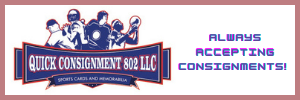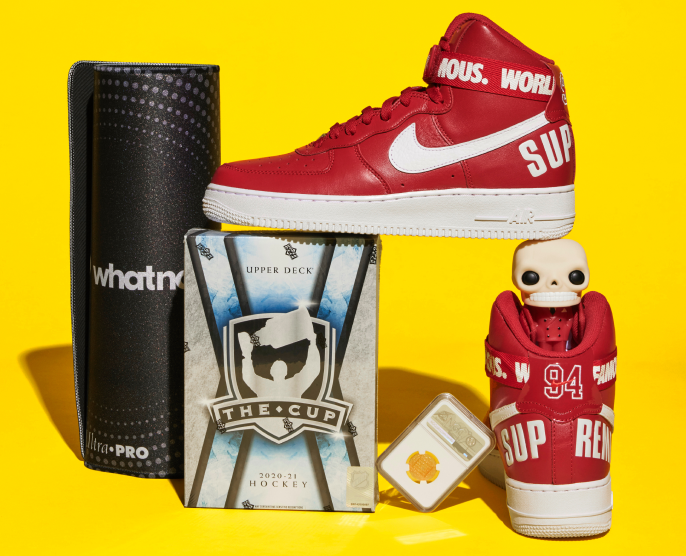
Top Minnie Miñoso Cards to Collect
Minnie Miñoso, often shown as Orestes Minoso on his early baseball cards, is one of the most popular and legendary players in the history of the Chicago White Sox franchise. The "Cuban Comet" starred for the "Go-Go" White Sox teams of the 1950s, dazzling fans with his combination of power, speed, and defense. Fans on the South Side of Chicago and beyond have long considered Minoso to be a Hall of Fame-caliber player. Finally, after decades of waiting, he was selected for Cooperstown by the Golden Era Committee. This list looks at several of the very best Minnie Minoso cards to add to your collection.
Minnie Minoso's career as a player covered five decades, starting with a short stay in the Negro Leagues in 1947. It even reached the 1970s and 1980s as he made brief appearances with the White Sox. While Minoso spent time playing for the Indians, Cardinals, and Senators, the prime of his career and the bulk of popularity came with the White Sox in the 1950s and 1960s. "Mr. White Sox" appeared in nine All-Star Games, won three Gold Gloves, and finished his career as the franchise's all-time home run leader. The White Sox retired Minoso's jersey number (#9) and also honored him with a statue outside the stadium.
Although Minnie Minoso began his career in the Negro Leagues and Latin America, he still managed to appear on a few hard-to-find baseball cards prior to becoming a star in the Majors. Topps and Bowman were quick to add him after the high-flying Cuban won over fans across the Major Leagues. Several oddball issues also included Minnie Minoso during the early years, which has given collectors additional cards to pursue with varying degrees of availability and price. Minoso's career stretched through the 1950s and 1960s, allowing him to appear in some of the most beloved baseball card sets following World War II. After that, his re-emergence in the baseball card world took place during the early 2000s. No matter your age, budget, or collecting interests, there is a Minnie Minoso card that fits into almost any collection.
Top 10 Minnie Minoso Baseball Cards
Bolded links go directly to detailed product profiles or player guides when available. Shop online or check the completed sales prices using the eBay links.
10. 2001 Topps Heritage Minnie Minoso Real One Autographs #THA-MM (Orestes Minoso)
As a player from the 1950s and 1960s, it's not hard to argue that a majority of the Minnie Minoso cards appeared in some great sets. His popularity has also propelled him into many modern baseball card products, including 2001 Topps Heritage. The premiere issue of Heritage borrowed its design from 1952 Topps. As one of the key cards in that classic Topps release, Minoso figured prominently on the checklist. The White Sox Hall of Famer also has several different relic cards, but the true prize for Minoso collectors is his certified autograph. The odds to pull autographs out of 2001 Heritage were long and their popularity means that many of these cards have already found long-term homes in collections. There are two versions of the Minoso autograph with the main blue ink and the limited red ink, featuring 52 serial-numbered autographs.

9. 1946-47 Caramelo Deportivo Cuban League Minnie Minoso #84 (Orestes Minoso)
Prior to the MLB, Minnie Minoso spent time playing for the New York Giants and Cleveland Buckeyes in the Negro League, as well as in his home country of Cuba during the winter months. The Winter League players were very popular in Cuba and many from his era appeared in the Caramelo Deportivo baseball card sets. The small sets with undersized cards often included local players along with Negro League stars who spent their offseason playing winter ball. Minoso was both a star of the Negro Leagues and a fan-favorite in his native Cuba, helping him make the checklist of two different Caramelo Deportivo sets. This was his last Cuban Caramelo Deportivo card as he would sign with the Cleveland Indians during the winter preceding the 1948 season.
The 1946-47 Caramelo Deportivo Cuban League card features a grainy black-and-white photo with the card number in the corner. The Caramelo Deportivo cards were printed on thin paper, creating condition issues. This is one of the rarest Minnie Minoso cards. It does make infrequent appearances on the secondary market, but often with a very steep price tag. If you are a long-time Minoso collector, this card would make a great "crown jewel" piece for your collection.

8. 1945-46 Caramelo Deportivo Cuban League Minnie Minoso #27 (Orestes Minoso)
The 1945-46 Caramelo Deportivo set houses some of the most popular Winter League cards produced. These cards are also easier to find compared to '46-47. The undersized cards (1 7/8" x 2 5/8") again feature a black-and-white player photo and the card number in a small circle on the front. The card back has basic biographical information on the player. This is not a common Minnie Minoso card to run across and the cards that do appear on the secondary market come with a significant cost.
Collectors could also buy an album to hold their Caramelo Deportivo cards, so many copies of the Minoso issue have damage from originally being glued on a page. Occasionally, copies of the entire album come up for sale, but again at a significant cost. The elevated price of the complete set is largely due to the fact that the most prominent cards outside of Minoso belong to Negro League stars and Hall of Famers Martin Dihigo, Raymond Brown, and Ray Dandridge, who have a very limited catalog available to collectors.

7. 1953 Topps Minnie Minoso #66 (Orestes Minoso)
The 1953 Topps cards are some of the brightest and most colorful cards from this decade. Beyond the vivid colors used in the artwork, many in the collecting world also note that the art on these cards is far more realistic in appearance than 1952 Topps. The checklist is short on important rookie cards, but certainly packs a lot of star power with Jackie Robinson, Satchel Paige, and Mickey Mantle.
As for Minnie Minoso, his second-year card holds much more value and importance during this era than with modern baseball cards. Minoso's 1953 cards generally have more eye appeal than the majority of his 1952 issues. While the card is not inexpensive, it is a relative bargain compared to the cost of other Hall of Famers in 1953 Topps. Collectors who like the appearance of the card, but are on a limited budget can find an affordable and easily-accessible reprint in 1991 Topps Archives 1953.
6. 1952 Red Man Tobacco Minnie Minoso #15 (Orestes Minoso)
Minnie Minoso has several rookie issues from 1952 products, which was not always the case with players from this era of baseball cards. If you are new to collecting his cards or are just looking for an affordable choice, the 1952 Red Man Tobacco card is a great option. The oversized cards (3 1/2" x 4") are popular in large part due to the colorful backgrounds, nice artwork, and memorable card design.
Because they were attached to the outside of tobacco pouches, this Minnie Minoso rookie card is tough to locate in mint condition. It is commonly found with creases and the colored borders often wear poorly. Furthermore, collectors often removed the perforated tab at the bottom of the card, causing further wear and tear. While all those pitfalls exist for this early Minnie Minoso card, many collectors are still willing to pursue it, even with defects, due to the overall styling and appearance. The Red Man Tobacco Minnie Minoso rookie is also widely available on the secondary market and is by far his least expensive card produced in 1952.

5. 1954 Red Heart Minnie Minoso
One of the more unique oddball releases from the 1950s is 1954 Red Heart Baseball. Red Heart was a dog food brand that offered collectors baseball cards via a mail-in offer sheet as part of a dog food promotion. Mickey Mantle and Stan Musial are the two most popular players in the 33-card set. However, other Cooperstown inductees like Ralph Kiner, Duke Snider, and Minnie Minoso have seen an uptick in the demand and price of their Red Heart cards in recent years.
The good news for collectors searching out this Minoso card is that the White Sox great has a blue background, making it one of the more common cards. Nevertheless, the increased attention the Red Heart cards have gotten in recent years has made this one of the tougher Minoso cards out there. Copies of the card can approach the same price levels as his rookies, but this oddball is still a must-own for any serious collection of Minnie Minoso cards.

4. 1953 Bowman Color Minnie Minoso #36 (Orestes Minoso)
The classic design of 1953 Bowman Color, with a full-sized color photo of the player and white border, is amongst the all-time most popular designs in the hobby world. There are also black-and-white cards, but the color cards have always been far more popular. However, the back-end of the Bowman Color checklist is short-printed with the cards being difficult to find and often very expensive. Luckily, Minoso is in the front portion of the 160-card set and there is a healthy quantity of these cards on the secondary market.
This second-year Minoso is amongst the Hall of Famer's most popular cards. A large part of the appeal naturally comes from the design. In this case, it combines a full-color photo of the White Sox outfielder resting his head on the barrel of his bat. It's arguable one of the best photographs of Minoso to appear on a baseball card. High-grade and mint copies can be quite pricey, but this is such a great-looking card that even copies with minor flaws should be worthy of a place in your collection.
3. 1952 Berk Ross Minnie Minoso (Orestes Minoso)
One of the more difficult to find and condition-sensitive Minnie Minoso cards arrived in 1952 Berk Ross. While the origins and background of the Berk Ross product are a little hazy, the set was issued in both 1951 and 1952 with a heavy lean on the New York teams in both checklists. The Berk Ross cards have grown in popularity in recent years, as many collectors have been drawn to the short checklist of 72 cards loaded with star talent. The lineup features cards of Joe DiMaggio, Mickey Mantle, Jackie Robinson, Ted Williams, and a rookie card of Minnie Minoso. The 1952 Berk Ross set was issued in packs with single cards that had imperfections. Many copies of the Berk Ross cards were cut off-center with perforations showing on the tops and bottoms.
As for the Minnie Minoso rookie card, White Sox collectors love that the fuzzy picture shows him standing in front of the distinct outfield grandstand at Comiskey Park. The picture combining the Hall of Fame outfielder and the franchise's long-time home make this card a favorite.
2. 1952 Bowman Minnie Minoso RC #5 (Orestes Minoso)
The 1952 Bowman card of Minnie Minoso is one of the more affordable options for collectors looking to add a rookie card of the White Sox great. While many of the Topps and Bowman products from the early 1950s are included in debates of all-time great baseball card sets, 1952 Bowman is frequently left out of that conversation. Similar to 1951 Bowman, the cards feature player pictures that are color reproductions of black-and-white photos and use the same dimensions (2 1/16" x 3 1/8") as the previous year.
One of the biggest differences between 1951 and 1952 Bowman were the rookie cards on the checklist. The 1951 set featured first-year cards of several Hall of Famers, including Mickey Mantle, Willie Mays, and Whitey Ford. Meanwhile, the 1952 Bowman set has Minoso as the lone Hall of Fame rookie card. It may not be as aesthetically appealing as some of the other Minnie Minoso rookie cards, but his card provides one of the best values for Hall of Fame rookie cards during this period.

1. 1952 Topps Minnie Minoso RC #195 (Orestes Minoso)
Minnie Minoso has multiple rookie issues in 1952, all offering a large degree of collectability, but 1952 Topps is one of the most iconic first-year cards in what is considered by many to be the greatest baseball card set ever made. The portrait-style photograph features Minoso in an airbrushed uniform, as the White Sox did not trim around the collar of their uniforms. Minnie had made his Major League debut with the Cleveland Indians during the 1951 season before being traded to the White Sox. The photo used likely showed Minnie in an Indians' uniform.
As with all 1952 Topps cards, the Minnie Minoso rookie is expensive, but the degree of cost varies greatly with the condition. One of the biggest condition factors on this card is the background color, which should be a soft yellow. The yellow has faded on many copies of this card, making the background appear closer to an off-white. It's a small flaw, but really important for collectors willing to spend more for a clean, mint copy. Naturally, other condition issues can be found with cards from this era including edge wear, soft corners, and centering. Overall, this is a must-have card to own if you are collecting Minnie Minoso, Hall of Fame players, White Sox, or cards from this time period.

 | Making purchases through affiliate links can earn the site a commission |
































